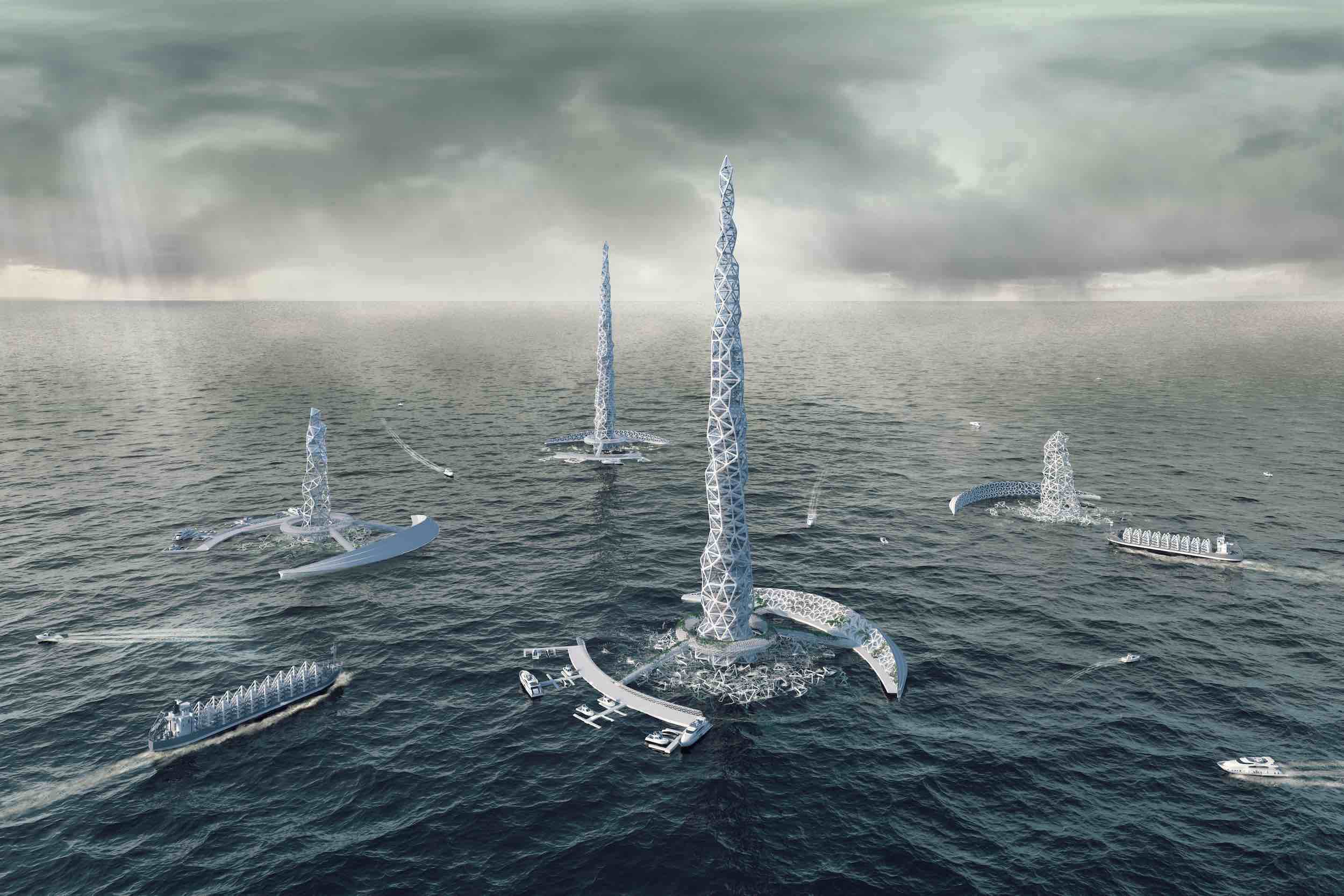The Chicago-based international architectural firm PALMA has designed "Atlântica Self-Rising Tower" inspired by the behavior of insects like ants, termites and bees and their ability to construct large-scale habitats for their communities.
Project description by the architects:
The Atlântica self-rising tower investigates the future of construction and explores the boundaries of automated building assembly and self-organization. Inspired by the behavior of insects like ants, termites and bees and their ability to construct large-scale habitats for their communities, research and investigations on self-assembling components demonstrate the potential future for construction. Envisioning that building parts can organically self-assemble into optimal, self-supporting configurations in an oceanic environment, the Atlântica tower concept challenges the ordinary construction process by building from top to bottom and from underwater up.
 image © Palma + Partners Corporation
image © Palma + Partners Corporation
By utilizing a magnetic system embedded in the structural frame of the individual components, the building members could be joined together based on predefined and optimized geometry and construction sequencing algorithms. The building form would change based on the number of members deployed underwater, which could be continuously modified by addition or subtraction. These modular components would be produced off-site, shipped to desired assembly location and released underwater, allowing the self-assembly process to begin. Triggered by increased water entropy, the individual pieces would find their adjacent matches and start the forming process of the structure.
 image © Palma + Partners Corporation
image © Palma + Partners Corporation
The modular framework of the Atlântica tower allows for different program types with easy adaptability. From housing, lodging and working uses to vertical farming and sky gardens, Atlântica could become a community within itself.
The prefabricated components consist of a lightweight material frame which, when connected with others, creates a self-supporting tube structure that can host a variety of floors and floor heights within. The individual components could have multiple infill materials options, from flat and solid to soil cells and solar cells, depending on their location and function within the tower.
 image © Palma + Partners Corporation
image © Palma + Partners Corporation
As energy conservation and generation is a key component for a self-sustaining building, the magnetic abilities of each component are intended to be self-powered by integrated solar cells. ETFE (Ethylene Tetrafluoroethylene) lends itself as a good material for the infill of the components at the building exterior. The EFTE cushions are lightweight, could have multiple transparency options, and have high corrosion resistance and consistent material strength in extreme temperatures. The EFTE cushions have also the capability to provide thermal comfort in changing climatic conditions by utilizing a multi-layer application with user-drives internal pressures. Solar cells could be “printed” on the external layers of the cushions, contributing to energy generation and at the same time managing solar heat gain to the interior.
 image © Palma + Partners Corporation
image © Palma + Partners Corporation
The Atlântica self-rising tower taps into innovative technological advances and provides a concept for self-assembled structures that can be developed along coastal cities in major body of water. As these structures are floating and do not relay on any foundations or external infrastructure, they can easily respond to rising sea levels and relocate as needed to avoid extreme weather conditions. Atlântica’s ability to adapt to change would make it an example of true resilience.
Architect: PALMA
Status: Competition
Source: evolo.us





